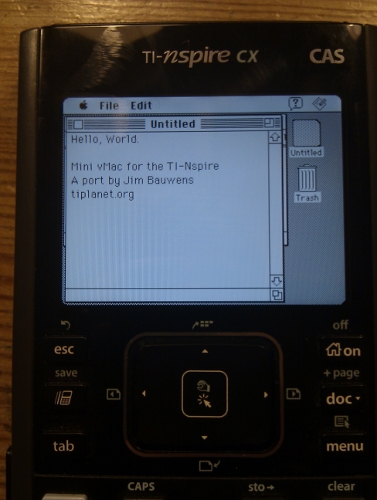

It’s as if the ”industrial quality” honed into the Intel chipsets over tens of years of “issue removal” is not there on the M1. More “hobby” than “industry” in my personal view. M1 may be a heck of a sprinter, but loosing out when marathons shoveling huge amounts of data around are required. It’s not heat, it’s not throttling per se, maybe lacking firmware robustness, but mainly simple lack of “real muscle power” on the interfaces.
#MINI VMAC AUTOQUIT PRO#
Same operation involving the same data from same drive A to same drive B, will display around 65-70% of the speed using the Mac Mini M1 2021 above, compared to the previously mentioned Intel based MacBook Pro from 2018 with the same OS version. You see a similar trend, when USB-C (10 GBit/sec SSD) and USB-A (5GBit/sec SSD) are involved. The M1 can be extremely fast on some tasks, compared to Intel, but when huge amounts of data involving overlapping operations (a basic requirement, when you transfer hundreds of gigabytes of data from one SSD to another with average transfer speeds around 2GByte/sec) problems tend to turn up at infrequent intervals. I do on my Mac Mini M1 16GB/1TB 10Gbit 2021, and the exact same tasks involving the same external devices and the same data and operations, never exhibit these behaviors on my Intel based MacBook Pro 13 (late 2018, 4 Thunderbolt), that handles data I/O operations at roughly the same or faster speeds, but without any hiccups of the sort exhibited by M1 on identical tasks involving the same OS version. If you also involve Thunderbolt drives connected to external Thunderbolt 3 or 4 docks/hubs, you’re bound to experience these “side effects” from time to time on M1. Let’s say you’re trying to sync a 300-500 GB video project from one SSD (Samsung 970 Pro easily handling 2.5+ GByte/sec read and around 2.0+ GByte/sec sustained (!) write, where large video files are involved) to your NAS (whether over gigabit, 2.5 gigabit or 10 gigabit networks makes no real difference). It also happens in other apps (both Rosetta intel based and native M1 apps), and nearly always involves moving large amounts of data and files at various lengths (minor texts to huge videos) over a period of time, involving - especially - high performance Thunderbolt SSD drives as sources. The exact same thing also happens from time to time with FCPX, especially on lengthy tasks (maybe you’ve left the computer to do it’s thing in peace and quiet during an estimated several hour render processing stint).
#MINI VMAC AUTOQUIT SOFTWARE#
Perhaps there is still a lot of Apple SDK work to be done to make the chip respond reliably when utilizing gpu cores rather than the cpu software playback/encoding? I'm not an engineer in any way, just my curious musings! All versions past that have been a bit wonky in some way or another and I keep having to downgrade to finish projects, which is a shame because I like the new interface a lot! From the release notes, it looks like a huge part of 17.4 was hardware acceleration for M1/M1 Max. they just don't get reflected in the viewer pane in my case.Īnd while the M1 is certainly not a powerhouse, I have been editing and coloring with some fairly resource hungry tools on it successfully in 17.2.2. My hope is we will see much more powerful M1 Mac Minis next year.Īgreed on many points! It will be awesome to see where these integrated designs like the M1 take us in the future! Most of the time my "half crashes" still allow me to make changes to nodes, and to save, etc. The MacBook Pro M1 Max can actually do quite a bit, but they're a lot more costly. I wish we had more of a Configuration Guide (last updated in August of 2019), but I don't think a Mac Mini will be good enough for anything but a very, very basic session. I think it's a bad idea because the machine is just underpowered. In those cases, I'll reboot, then relaunch, and all is well.īigger answer: totally my opinion, but I don't think a Mac Mini M1 will work well for Resolve. When it does and I notice, I immediately try to save, exit, and note if Resolve hesitates in exiting. I have encountered cases where Resolve is in what I call a "partial crash" where I can do certain things, while other functions are ignored. when saving and quitting the app, it gets stuck in the dock, having to force quit it. I can click around but no image is shown. sometimes (not always) resolve goes into a weird "half crashed" mode.

Simple rectangle with a duplicate node afterwards. Jensgruen wrote:So, yes a Mac Mini M1 16gb is not super duper, but this should work nonetheless.


 0 kommentar(er)
0 kommentar(er)
